Quotation marks
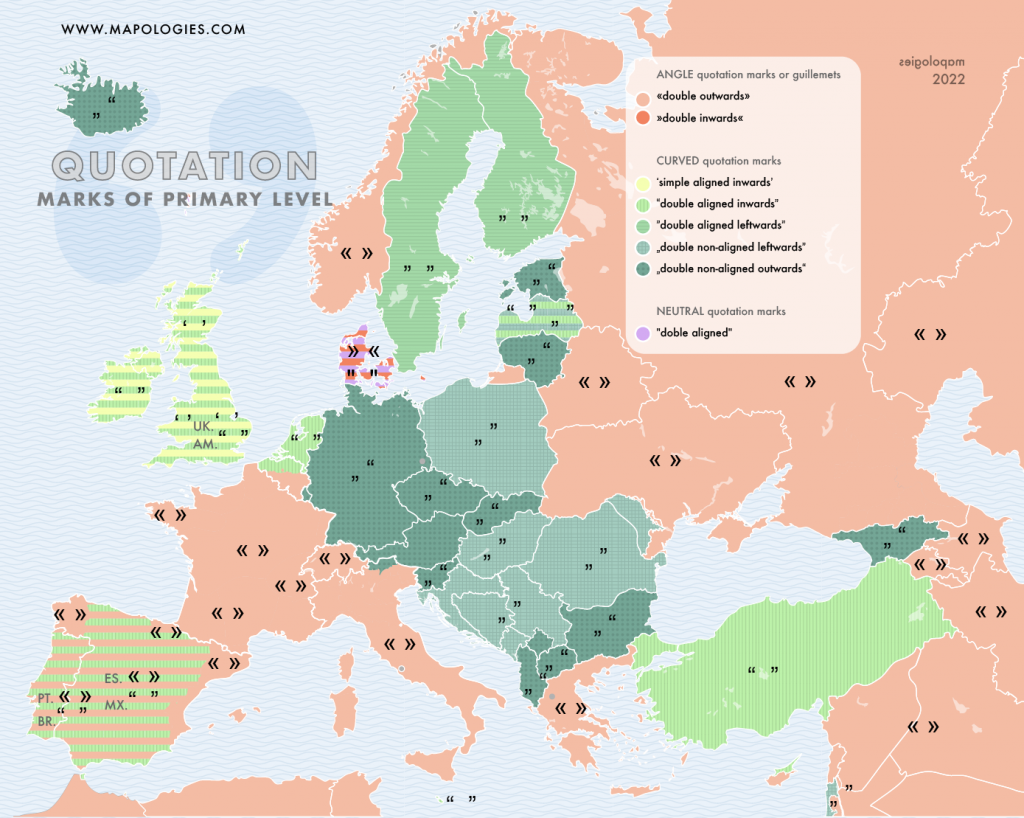
Quotation marks, also known as speech marks or inverted commas, play an essential role in written communication by indicating direct speech or quoted text. Different languages utilize various symbols to represent quotation marks. Here’s a brief overview map of some of the symbols used in different languages (including both European and American varieties) as quotation marks (primary level, secondary level are different).
Step into the vibrant world of quotation marks! These nifty symbols add flair and clarity to written language, but did you know that different orthographic norms have their own unique symbols?
In English, we have an oceanic gap: single quotation marks (‘ ‘) for the British singularity, while double quotation marks (” “) for the American passion for the oversized. In both cases, their alignment gives a sense of order and balance.
Spanish & Portuguese has also the Atlantic division. México and Brasil use the American double quotation marks (” “) but Portugal and Spain use the same symbol as the French language: Here, they embrace the elegant guillemets («»), named after the French printer and punchcutter Guillaume Le Bé. Picture these angled symbols gracefully embracing the quoted text. The opening guillemet («) leads the way, and the closing guillemet (») gracefully wraps up the conversation.
It is true that guillemets are the often common punctuation mark: Italian, Greek, Norwegian & Russian. But do not get it wrong, not all of them. the world of punctuation holds more surprises than meets the eye.
These remarkable marks showcase an exhilarating range of styles, far surpassing what we’ve encountered in the Western hemisphere. Picture a mosaic of unconventional punctuation, where some marks defy alignment and break free from the confines of the line. In these places, the rules of tradition are playfully challenged.
In Central Europe, the Balkan peninsula, and the Baltic countries, a vibrant array of double curvy quotation marks steals the show. These marks exhibit a fascinating variety, far beyond what we’ve encountered in the Western hemisphere. Some quotations gently embrace the text, curving inwards like a tender caress, while others boldly project outwards, making an even more powerful statement. Some written language traditions even venture against the classic left-to-right flow, orienting themselves to the left as if flowing against the current of our convention.
@ At sign
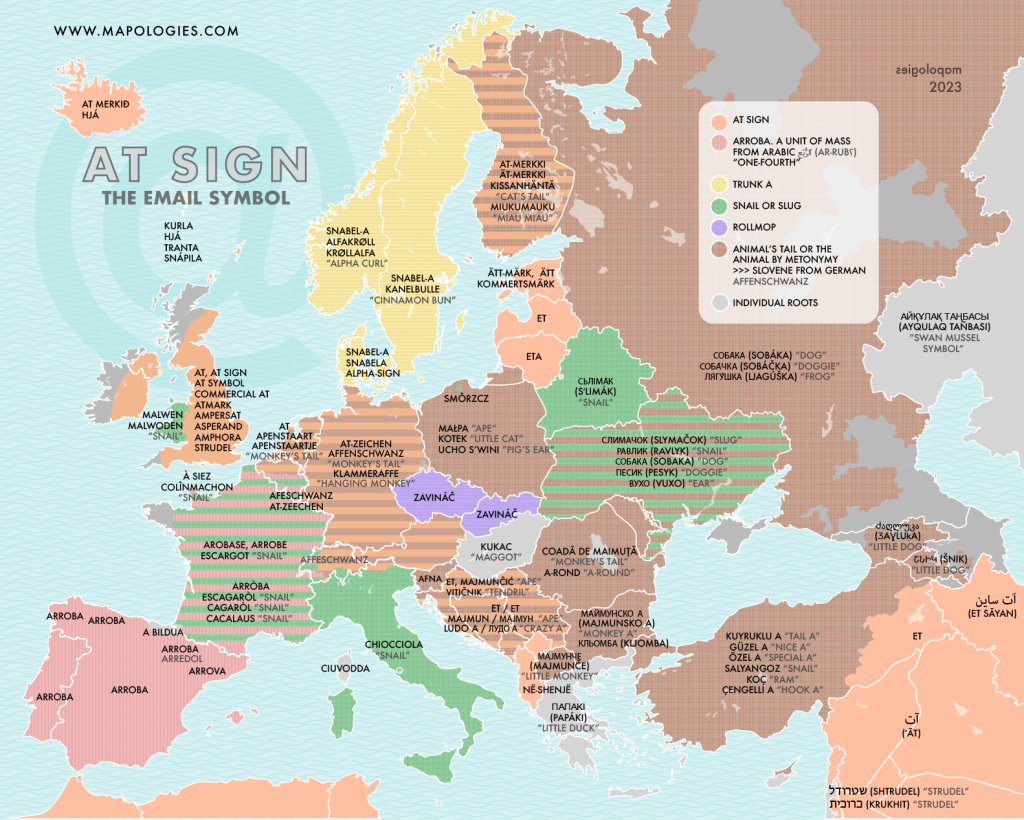
Tail sign
An ancient modern symbol
In 1971, Ray Tomlinson, an American computer programmer, adopted the @ symbol for the brand-new “e-mail” to separate the username from the host computer is located at. @ stands for “located or hosted at”, and thus the name in many languages “at sign”, “at mark” or “at symbol”. Later Twitter in 2006 gave rise to using @ as a mention, a description for directing a public post to a particular user. So what is an invention of the Internet era like emails and social media?
In 1345, in the Bulgarian of the Manasses Chronicle, the @ symbol was used as the initial “A” for the “amin” (amen) formula. A century later we found it in the Spanish “Taula de Ariza”, a registry to denote a wheat shipment from Castile to Aragon. In Catalan, Spanish, and Portuguese was used as an abbreviation of arroba, a unit of weight equivalent to 25 pounds, and derived from the Arabic expression of “the quarter” (الربع, ar-rubʿ).
In the 16th century, a document was sent from Seville to Rome about “the price of an @ of wine in Peru”. It was interpreted to mean amphora (anfora), a unit of weight and volume based upon the capacity of the standard amphora jar since the 6th century.
A wild symbol
Prepare to embark on a safari as we explore the captivating names of the “@” symbol. Get ready to discover the wild side of punctuation!
In the German language the symbol goes by the name “Klammeraffe“, in Dutch “apenstaartje“. It paints a vivid picture of “monkey tail” wrapped playfully around a branch. In the East, it is just referred as “monkey” like Polish “małpa” and, Serbian “Мајмун” or “majmun“. Further East Russians imagine the tail of a “dog” “собака” (sobaka).
As we wander deeper into this linguistic zoo, we stumble upon the mesmerizing invertebrate section. Here, the Hungarian “kukac” beckons, its name echoing the curl of a worm. Italian introduces us to the whimsical “chiocciola,” like the snail shell. In Belarusian “сьліма́к” (sʹlimák), evokes images of a snail or a slug. And let’s not forget the traditional French delicacy “escargot“. This is not the only delicacy: Rollmops are pickled herring fillets, rolled into a cylindrical shape, often around a savory filling. But also @ for Czechs & Slovaks: “zavináč“.
Comma
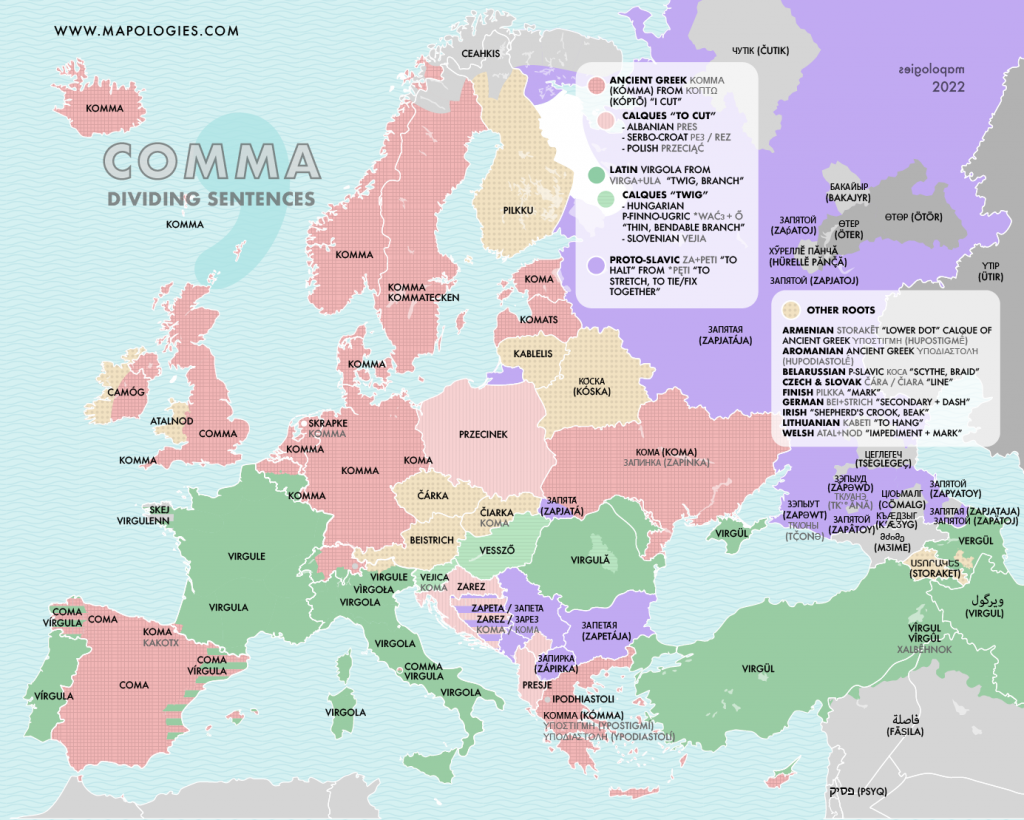
Question mark
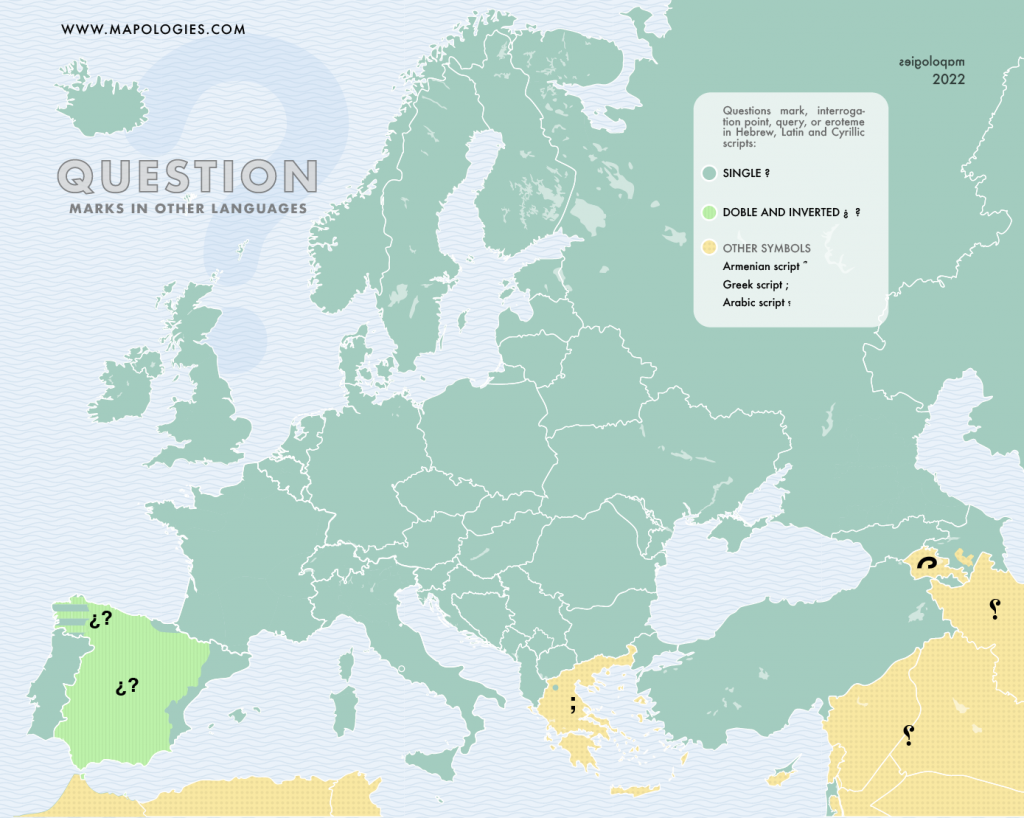
The letter W
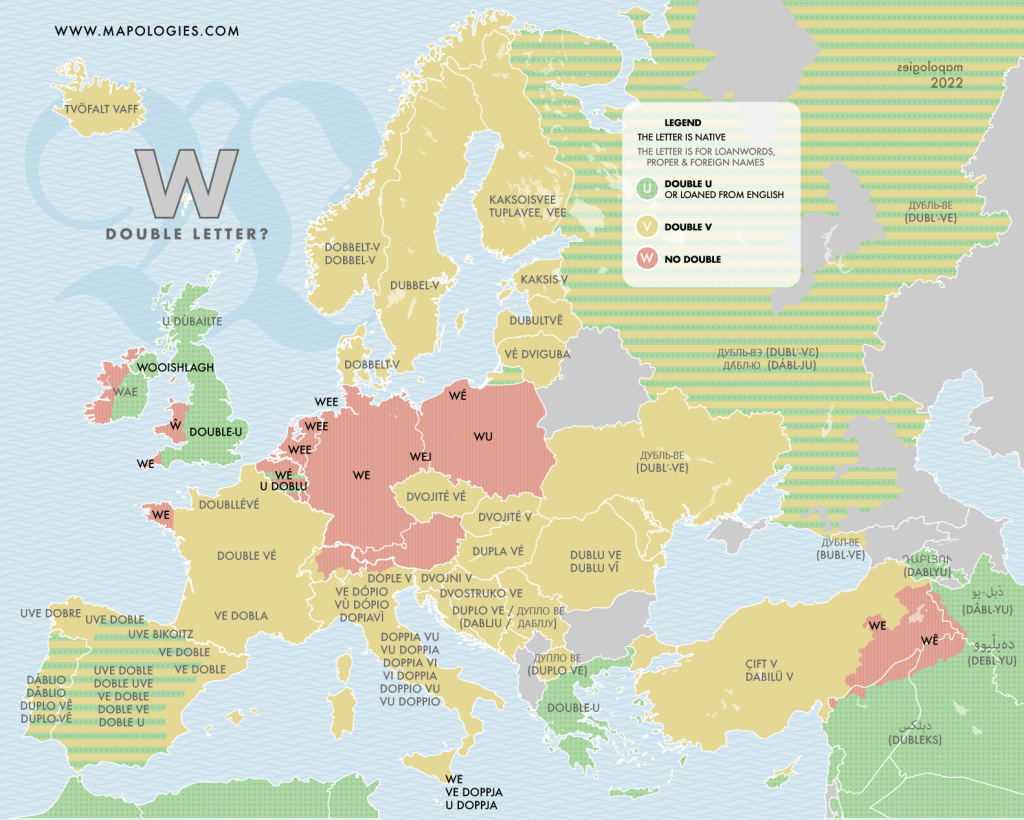
A double letter?
The letter “W” is an intriguing character that holds a unique position in the alphabet, at the end. Is it because it was added later? Is it because is related to its neighboring, the letter V and letter U?
While it may seem like a simple letter, many people might say it is not: It is double. In English, the letter “W” is called “double-u”. But in other languages is called just W: in German “ve” or in Polish “vu”. Why?
The classical Latin alphabet lacked W and U. The letter “V” was used for both the vowel sound /u/ and originally the consonant sound /w/. During the Middle Ages, scribes and scholars began to distinguish between the two sounds by using “V” for the labiodental consonant sound /v/ and “U” for the vowel sound. Similarly consonant “J” was added to differentiate it from the vowel “I”. But when it came to Germanic languages it was more complicated: two V’s (VV) were to represent the sound /w/.
A foreign letter?
Surprisingly, not all languages include it in their native repertoire. However, thanks to the advent of the “triple W”, World Wide Web (WWW), the letter “W” skyrocketed to global fame, making its mark in words like “web” and “wiki.”
In Spanish, for instance, it goes by the name “uve doble,” which translates to “double V” (Some regions also call it “doble u,” meaning “double U”). This is echoed in languages like French, where it is known as “double ve,” and Hungarian, where it is called “dupla vé.”



